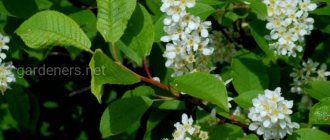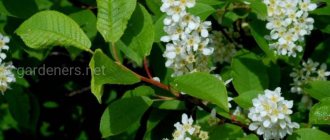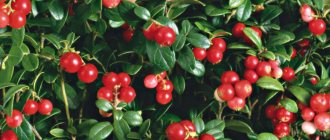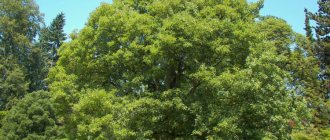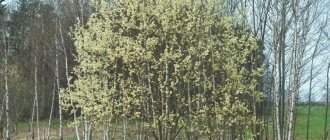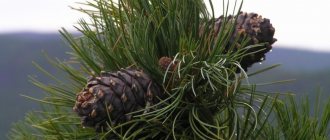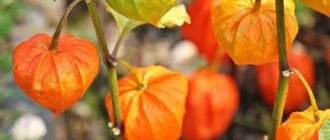- October 14, 2018
- Trees and shrubs
- Ekaterina Ryzhkova
What does mulberry look like? What kind of plant is this?
Representatives of the mysterious Mulberry family are found throughout the globe. Cow tree, rubber tree, bread tree, ficus tree and, finally, mulberry tree - they are all from this family. Giant deciduous and evergreen trees, herbaceous perennials and vines inhabit vast areas of the earth. What mulberry is, we will find out below.
A little history
Agree, the mulberry looks great in the photo! This plant is widespread in the southern regions and central zone of the CIS and the Russian Federation. Its fruits are used as food, and its leaves are fed to silkworms, whose cocoons are used to obtain natural silk threads.
In China and Central Asian countries, mulberries (photo presented in the article) are dried for future use and fed to elderly parents to prolong their life. It is known that in Central Asia this plant is called the king berry or king tree for its medicinal properties.
There are approximately 16 species of mulberry tree, which are common in temperate and subtropical climate zones. Mulberry grows well in Bulgaria, Russia, Azerbaijan, Romania, Ukraine, Armenia and other countries of North America, Asia and Africa.
It is believed that the black mulberry was distributed throughout the world from Southwest Asia, and the white mulberry from China. The history of using the leaves of this plant for growing silkworms goes back more than 4000 years. People ate the fruits even before the events described in the Bible. Did you notice that the mulberries in the photo are shaped like blackberries? They are very useful and are used as a natural antiseptic.
Features of cultivation
Caring for mulberries is the same as caring for other garden crops. Timely watering, fertilizing, pruning, prevention of diseases and pests - this is the main list of work required when growing mulberries.
Silkworm tree
Selecting soil and planting location
It is important to choose the optimal location for mulberry in the garden, since this crop is long-lived. The photophilous and heat-loving mulberry requires a sufficiently lit place, protected from the wind.
The soil must be sufficiently fertile. It is not recommended to plant a tree on swampy and poor sandy soil. The presence of groundwater close to the surface of the earth will also adversely affect the growth of mulberry.
Mulberries with only male flowers will not bear fruit on their own; the gender can only be determined from a four-year-old seedling. Experienced gardeners recommend purchasing seedlings of exactly the same age, on which the first harvest has already ripened.
What time to plant
It is recommended to plant a mulberry tree in open ground in April, before sap flow begins, or in the autumn - before rainy, cold weather (September, October). Gardeners prefer autumn for planting, believing that if the mulberry overwinters, it will live for many years.
Watering and fertilizing
Mulberry trees require watering in the spring and in the first month of summer. Watering is stopped in July. This procedure is necessary if the weather has been dry for a long time. Good watering during dry periods will prepare the mulberries for winter hardiness. If there is a sufficiently large amount of natural precipitation, there is no need to water the tree.
The plant needs feeding in the same period as watering - from spring to July. In the spring they feed with fertilizers containing nitrogen, in the summer - with potassium-phosphorus. For the first feeding, nitroammofoska (50 g of fertilizer per 10 liters of water) is suitable. In summer, complex fertilizers are used, for example, “KemiroyUniversal” (20 g per 1 sq.m.). While digging tree trunk circles, you can add ash (200 g per 1 sq.m.).
When watering mulberries, it is recommended to use liquid fermented manure (1 part to 6 parts water) or bird droppings (1 part to 10 parts water) as top dressing. From mid-summer, feeding is stopped so as not to provoke the growth of new shoots, which will not get stronger by winter and will not tolerate winter frosts well.
Loosening and weeding
The near-trunk soil surface must be periodically weeded and loosened. This enriches the roots with oxygen and prevents the occurrence of diseases and pests. After weeding and loosening, the ground can be mulched with sawdust. Sawdust inhibits the growth of weeds, the soil underneath does not dry out, and a crust does not form on the ground. In this case, one condition must be observed - to update the sawdust annually.
Trimming
Pruning of the mulberry crop must be done during the dormant period - complete or partial. It is better to carry out this procedure early in the spring, before sap flow occurs. At the end of April - early May, rejuvenating pruning is carried out, and at the same time the crown is formed, until the buds open. In autumn, after leaf fall, the tree needs sanitary pruning. The air temperature during this period should not fall below +10 degrees.
In a young mulberry tree, the height of which reaches 150 cm, all branches must be removed. This must be done so that the branches of an adult tree do not fall to the ground. The central stem is left to grow to a height of 5-6 m, while cutting off competing stems. If you don’t want to regularly make formative prunings, you can leave the crown to grow naturally.
You can form a low mulberry tree; caring for it will be simple and convenient.
To do this, you need to cut off the top at a height of 1.5 - 1.7 meters, then form a “skeleton” of the tree, like a dwarf apple tree. Such a mulberry tree should have about 10 skeletal branches left. The plant requires constant support of the created form. As extraneous branches grow, they are regularly trimmed. Do not remove drooping main branches, but support them.
In the autumn, when the tree sheds all its leaves, it needs to be prepared for winter. Sanitary pruning is necessary to remove injured, dried, disease-damaged branches. Very thin stems, as well as crowns growing inward, are also removed. Sanitary pruning can not be done every year, if this is not necessary: the tree has been well preserved throughout the year.
Transfer
- Before planting, dig up the soil, removing all the weeds. When digging, add fertilizers - humus or rotted manure, wood ash and nitroammophoska. It is not recommended to add peat as a fertilizer, as it acidifies the soil substrate, which is undesirable for mulberries. You can apply fertilizer directly to the planting hole.
- After preparing the ground, we dig a planting hole. Its size will depend on the root system of the plant. The roots of the culture are quite voluminous. The average pit size is 70 by 70 cm, the depth is at least 50 cm.
- Place a drainage layer of expanded clay or broken brick at the bottom of the pit. Sprinkle with a thick layer of humus and water.
- Before planting, keep the mulberry root system in water for 10-15 minutes, saturating it with moisture. The seedling is placed in a prepared hole, and all the roots are carefully straightened.
- Sprinkle with soil, carefully shaking the stem so that there are no voids left in the ground. The soil is compacted and watered abundantly.
- When all the water has been absorbed into the ground, the tree trunk surface is mulched with cut grass, humus or sawdust.
- If the seedling is thin, you need to provide support. Place it in the center of the hole before planting the mulberry tree. When the plant is planted, tie it to a support.
- Mulberry is a large plant. Therefore, when landing, you need to take this circumstance into account. The distance in the vicinity of other representatives of the flora must be at least 4 meters.
It is advisable to buy mulberry seedlings in the region where they are grown. Plants brought from the southern regions adapt less well in the middle zone; it is difficult for them to survive the frosty winter.
Productivity
The first berries may appear on a three-year-old mulberry tree. There are few of them, they ripen singly. On a five-year-old tree, the harvest ripens abundantly and regularly. The size of the berries becomes larger, by the age of 10 their length is maximum. The fruits ripen unevenly, quickly becoming overripe. It is important not to miss the moment of picking the berries so that they do not fall off. You can lay a cloth under the crown of the mulberry tree, shake the tree, and collect the ripened fruits. The berries are used for food immediately, as their shelf life is short, or they are processed.
Preparing for winter
The tops of the shoots are more often exposed to freezing. Spring frosts are the most dangerous for the plant, especially during the flowering period; then you don’t have to wait for berries. Therefore, preparatory work for wintering is very important.
The preparation stages are as follows:
- Mulch the soil near the trunk with sawdust, fallen leaves or straw. Cover the top with a layer of mulch with spruce branches; they are needed to retain snow.
- There is no need to wrap the trunk, since the shoots usually freeze slightly.
- At the end of October, trim off the green parts of the shoots that have not yet become woody. They are most vulnerable in cold weather.
- During the period of spring frosts, you can make smoke fires, which will protect young leaves and flowers from freezing.
- It is recommended to cover young trees completely for the winter. The trunk needs to be wrapped and covering material placed over the branches. Secure the covering with boards and other heavy objects so that winter winds do not demolish this structure. Remove the cover after the threat of spring frosts, not earlier than May. It is advisable to spread poison for rodents under such a “blanket” so that they do not damage the trunk and young branches.
Description of the plant
Everyone should see a photo of a mulberry. This plant belongs to the genus of deciduous trees of the Mulberry family, as discussed above. People breed it mainly for its leaves - the basic food for silkworms and as a fruit crop. There are 17 species in the genus, but three are most often used. The berries are a cluster of bulk grains with small grains, pulp and skin.
There are a large number of species, varieties and forms, among which white, red and black mulberries stand out for their fruits. All species are deciduous, fast-growing dioecious plants, distinguished by the heterogeneity of leaf shapes, which, even on a single branch, can be five-, three-fingered or whole heart-shaped.
In all parts of the mulberry tree, milky sap flows, released when the plant tissue is damaged. The fruits are similar to blackberries or raspberries, in some cases they do not have seeds, in others they contain them. As can be seen in the photo, mulberry fruits reach a length of 2-3 cm and have the outline of drupes. These berries are sweet, juicy, and have a pleasant aroma. The first fruits begin to ripen in mid-July. The base ripening period is late July and early August.
Possible problems
Timely treatment with fungicides for preventive purposes will reduce the risk of mulberries being damaged by diseases and insect pests. You need to spray not only the mulberry itself, but also the soil surface near the trunk.
The first treatment is carried out before the buds open, in April, the second – after the end of the tree’s growth period, in October. Bordeaux mixture or Nitrofen solution will destroy pathogenic bacteria and pests. It is advisable to treat the plant with urea (seven percent solution) in early spring: the drug is a source of nitrogen needed by the crop during the growing season.
Mulberry is resistant to diseases, but there are still exceptions. Diseases affecting the crop include:
- Powdery mildew is a fungal disease. The surface of the stem and leaves is covered with a whitish coating. The disease progresses faster in dry times, especially if the mulberry crown is too thick. At the first symptoms, it is necessary to spray the tree with Bordeaux mixture or Fundazol. For preventive purposes, fallen leaves are promptly collected and destroyed in the fall.
- Cylindrosporosis. The disease appears on the leaves in the form of red-purple spots. As the disease develops, it destroys the leaf tissue inside the spot, which crumbles. The leaf blade then turns yellow and falls off.
The plant must be immediately treated with Silit (one percent solution). Spraying should be plentiful: 3 liters of product per adult crop. The procedure is repeated after 2 weeks.
- Bacteriosis is dangerous for young shoots and leaves. The disease manifests itself in the form of black spots. Leaves curl, stems bend. Spraying with Gamair and Fitoflavin should be started as early as possible, since the disease is difficult to treat. For prevention purposes, regular treatments are needed.
- Curly small-leaved. The virus is carried by pests. The foliage wrinkles between the veins, then granular nodules appear. As the disease develops, the leaves curl and the stems become rough and brittle to the touch. The disease cannot be cured, so prevention is very important. To prevent the mulberry from becoming infected, insect carriers must be destroyed in a timely manner.
- The mulberry mushroom can settle on mulberry wood. Fungal spores get into cracks and wounds on the bark, which leads to the destruction of the mulberry trunk. If a fungus is detected, it is removed (cut out) along with the infected wood. The wound is treated with copper sulfate (5% solution). Then they cover it with a mixture: mix one part of clay and lime with two parts of cow dung.
Fruit composition
Have you looked at the photo of the mulberry? Its ripe berries contain resveratrol, a plant antioxidant. This substance protects the plant from various bacteria, parasites and fungi. The fruits are 85% water, they contain fats, ash, dietary fiber and carbohydrates, vitamins B1, B3, A, PP, K.
Folic acid, riboflavin, tocopherol, pyridoxine, choline, ascorbic and pantothenic acid are present. The beneficial properties of mulberry (see photo of the fruit below) are determined by the presence of macroelements - calcium, phosphorus, potassium, sodium and magnesium.
Reviews from gardeners
Petr Moiseichuk, Russia
Mulberry “Pearl” is the decoration of my garden. Not very tall, neat, with berries of incredible taste. I recommend!
Source: agro-market.net
Maria, Russia
The Black Prince mulberry is partially self-fertile - the harvest, although not very abundant, will be obtained without a pollinator. But if there is a pollinator, the harvest will be larger and the berries will be larger.
Source: abekker.ru
Application
People often look at mulberry photos with curiosity. The first to use this plant in medicine was the Persian medieval scientist, philosopher and doctor Abu Ali ibn Sina - Avicenna.
All parts of the tree are suitable for healing - bark, fruits, roots, and leaves. Mulberry is an amazing natural antiseptic and can be used as a diuretic, anti-inflammatory, diaphoretic, expectorant and astringent.
It is used in the production of vinegar, citric acid and sugar. This unique plant in folk medicine can bring significant benefits in the treatment of many ailments. Fully ripe berries are an excellent laxative, good for constipation. Green fruits are better to eat when you have diarrhea.
If you dilute mulberry juice with boiled water, rinse your mouth with it if you have a sore throat. As a result, the disease will quickly disappear. An infusion of mulberry bark and berries is effective for bronchitis, bronchial asthma, and acute respiratory infections.
Decoctions of roots and bark in the form of a diuretic are used for hypertension. The leaves are infused and infusions are drunk to reduce the temperature during fever. For myocardial dystrophy and heart disease, it is recommended to consume berries in large quantities. A medicinal powder is prepared from the bark, which is then mixed with oil. As a result, a remedy is obtained for healing ulcers, wounds, and cuts. This ointment eliminates bruises instantly.
The beneficial properties of mulberry berries (photo presented) can be listed endlessly. Eating them helps in treating impotence and prostatitis, to alleviate menopausal syndrome and with uterine bleeding.
White
Many people enjoy looking at photos of white mulberries. As a rule, silkworm, white and multi-stemmed mulberries are cultivated to feed mulberry silkworms. The fruits of such a plant can be not only white, but also yellow, pink and even black. This variety received its name due to the light bark of the tree.
This plant is native to East and Asia Minor. This is a tall, fast-growing, long-lived tree with a dense, spreading or spherical crown. The leaves grow on the same tree in different configurations; they are yellow in autumn and dark green in summer. The berries of this type of mulberry deserve special attention - they have an unusually sugary taste.
It is unpretentious to conditions and soil - it grows well in urban environments, and its long roots help strengthen ravines and slopes. Transplantation is easily tolerated at a young age. This species can withstand severe frosts (down to -30 °C). If young branches are frozen, they are cut off. Then they quickly grow back, and the tree restores fruiting.
Gardeners also grow white mulberry as an ornamental plant: there are a large number of garden forms with spherical, weeping, dwarf, pyramidal, multi-stemmed crowns and various leaves. Picturesque forms are propagated vegetatively and by grafting.
It is known that this plant is used for group planting, single planting and for creating a dense hedge, as it tolerates regular pruning perfectly.
Reproduction
Mulberries can be propagated in several ways:
- Seeds. It is important that the seeds are fresh. They won't fit since last season. In mid-autumn, they are carefully removed from the berry pulp and cleaned. Then they need to be placed in a stimulating solution for a couple of hours and sown in a box with soil. In the spring, before sowing, they need to be stratified for one and a half to two months. You can sow directly into open ground, making grooves in it and pouring water with fertilizers. The seed is deepened by about 5 cm and sprinkled with earth. Then water generously again. When planting seeds in the fall, you need to mulch the soil well so that they do not freeze in winter.
- Cuttings. To take mulberry cuttings you will need a greenhouse. At the beginning of summer, green stems are cut, which are divided into cuttings with 2-3 buds, about 20 cm long. Then they are planted in a greenhouse with high air humidity, buried by 3 cm, at an angle of 45 degrees. By autumn the cuttings will take root, and by spring they will be ready to be transplanted into an open area. This method is most suitable for those gardeners who want the young mulberry tree to inherit all varietal qualities from the parent.
- By layering. This is how mulberries that have suffered from pests or severe frosts in winter reproduce. Since the root system of the Mulberry tree is superficial, the trunk usually has young shoots that can be dug up to form a new tree by removing excess shoots. This method also preserves the varietal parental properties.
- Vaccination. You can graft a mulberry tree in different ways. But the most popular method is the copulation method. Two cuttings of the same thickness are connected at the cut points and wrapped with elastic tape.
Black
The article provides a photo and description of the mulberry. It is known that black mulberry comes from Afghanistan and Iran. In hot countries, it looks like a large tree up to 15 m high with a spreading, wide crown covered with large leaves. Its black shiny fruits are very tasty and juicy, sweet and sour.
This deciduous summer green tree has a low crown. It is usually much larger in width than in height. The trunk is often curved, twisted or crooked. The bark is orange-brown or dark brown with cracks. The leaves are approximately 8 cm wide and 7-18 cm long, heart-shaped and broadly oval, with a slender short apex, deeply notched at the base, irregularly crenate along the edge, slightly lobed or serrate-crenate.
On the upper side, the leaves of black mulberry are pubescent, rough, the color varies from light green to bright green. This is a monoecious plant. Men's earrings are thick and short, pale green. Female inflorescences are even shorter. Fruits are formed not from carpels, but from parts of the flower cover. Blooms in May-June.
Appearance of mulberries
Of course, its advancement to the northern latitudes does not occur on its own, but only due to the fact that our compatriots want to have this extremely useful plant in their gardens.
The severity of the Russian climate does not allow the mulberry tree to stretch high up, so the height of these trees in our latitudes rarely exceeds six meters. But with proper cultivation, they begin to spread out, sprouting new shoots every year.
"Black Baroness"
You can easily study mulberry varieties using photos. What is the Black Baroness variety? This is a dioecious deciduous tree with a spherical, moderately dense crown. Its flowers are collected in spikes, dioecious. The leaves are simple, whole or three-, five-lobed.
The fruit is a one-dimensional, large, juicy, edible, complex, sugary drupe of black, thick color. The taste is very pleasant, sweet, practically without acid. The aroma is inconspicuous.
Fruiting is regular and abundant; the berries ripen in June or July. It has high productivity. The berries tolerate transportation satisfactorily. Fresh fruits can be stored without spoilage for 6 to 12 months. The variety is unpretentious in terms of maintenance conditions and soil. Withstands frosts from -30 °C and below.
Diseases and pests
The mulberry tree has a fairly strong immunity to various diseases, but improper care and harsh winters make it weak, and the plant can get sick. The most common mulberry diseases are:
- Ashpelt. A fungal disease that manifests itself as a white coating on the leaves. Constant air humidity and a dense crown can contribute to the development of this disease. You can cure a tree by spraying it with special preparations.
- Cylindrosporiosis. It is manifested by the appearance of light green spots on the leaves, which later become brown. A white flaky coating forms around them, which is the spores of the fungus. You can get rid of it using fungicides.
- Mulberry bacteriosis appears on young branches of mulberry trees and budding leaves. They turn black, then curl and fall off. Gum streaks appear on the trunks. The tree is treated with a complex of remedies.
- Tinder fungi. They appear only on weak plants with low immunity. As they grow, the wood suffers more and more and is destroyed. Remove the mushroom completely with a knife, treat the open surface with a solution of copper.
Insects considered to be pests include the Comstock mealybug, spider mite, mulberry moth and white American butterfly. These insects cause great harm to the mulberry tree, eating leaves and buds of the plant, forming cobweb nests. You can get rid of them by spraying the tree with special solutions such as Chlorophos or Kleschevit.
Black mulberry "Istanbul"
This is one of the mulberry varieties that produces large fruits. Tree up to 7 m high, tall. The crown is spherical and dense. It begins to bear fruit only in the 4th year. This mulberry has tiny flowers, collected in inflorescences in the form of a spikelet.
The leaves of the tree have the outline of an egg. It blooms in the last days of April. Ripe fruits are almost black in color, large, up to 3 cm in length. The ripening period is long: from mid-July to the end of August. The variety can withstand frosts down to -30 °C, and is unpretentious to conditions and soil.
Use in landscape design
Mulberry trees are successfully used in landscape design. Many varieties have been bred specifically for these purposes. Gardeners decorate their plots with mulberry trees and shrubs with amazing crown shapes and leaf colors. Hybrid mulberry varieties do not take up much space and adapt well to garden conditions and climate.
In the south of our country, near the Black Sea coast, in the North Caucasus, mulberry trees can be found in parks and alleys, on the territory of sanatoriums and treatment centers. Mulberries with a pyramidal crown shape are most often planted in groups. And the weeping variety is used to create hedges and decorate alleys.
"Plodovaya-1"
Have you looked at all the photos of mulberries? This tree is extraordinary. What is the “fruit-1” variety? This is an early ripening variety that produces juicy and large fruits. It is already possible to harvest in June. Its most important advantages are its bright taste and long-term fruiting.
The berries of this mulberry are sweet with an attractive sourness. They have a dense consistency and do not wrinkle during transportation. A distinctive quality is that in rainy weather the white fruits turn pink. There is no need to be scared - this is normal.
Harvesting
Harvesting of early mulberry varieties begins around the beginning or middle of June, but in some cases the berries do not ripen until mid or even late July. Separating the berries from the stalks is not difficult, but it is advisable to put them in a shallow container, covering each layer with paper. Picked fruits are kept fresh for no more than a day, after which they will have to be frozen or processed into jam.
Did you know? Hands stained with mulberries are very difficult to wash, but the juice of the same berries, but of a different color, can help: if there are traces of black mulberries, just remember the white ones in your hands.
"Hartut"
Fans of mulberry wine are recommended to plant this variety in their dacha. It begins to bear fruit in the third year of life. Yields are stable and high. The berries of this tree are large (up to 5.5 cm) and black.
The thick juice obtained from them resembles the taste of Cahors. The variety is actively used in cooking and winemaking. It is easy to grow and disease resistant.
Above are the varieties that are intended for human consumption. However, there are still many decorative variations that can embellish the surrounding space. These include golden mulberry, Tatarian mulberry, weeping mulberry, spherical mulberry, and pyramidal mulberry. There are varieties that are grown in pots or small containers. The choice of variety will depend on what goals you are pursuing.
Relatives of mulberry trees
The mulberry family includes several genera that are familiar to a wide range of people.
Breadfruit
Its fresh fruits smell like freshly baked bread, and fried fruits smell like potatoes. The homeland of amazing plants is New Guinea, from where the aborigines and then European travelers took them to the islands of the Pacific Ocean and the Caribbean.
Ficus
These include not only indoor plants, for example, ficus benjamina:
- Fig tree (fig or fig tree). This plant is mentioned in the New Testament and is considered sacred by Muslims. In Israel, tourists are shown a copy with a legend that Jesus and his disciples rested under it. Scientists scanned the tree and came to the conclusion that it is actually older than 2 thousand years.
- Ficus bengal (banyan). The aerial roots of this tree, reaching the soil, turn into full-fledged trunks on which a crown is formed. One plant can spread over several hectares.
- Ficus rubber plant. It is grown not only to produce natural rubber and latex. The roots of this tree are located not only underground, but also on its surface. In the rainiest place on the planet - the Indian state of Meghelaya - this property of wood is used to build bridges. First, bamboo guides are installed, then the roots of living ficus trees are laid along them. In humid climates, vegetation quickly fills the space. In 10-15 years you can “grow” a bridge 30 m long.
Anchar
The poisonous anchar mentioned by Pushkin is also a relative of the mulberry. The sap of a species growing in Java is used by aborigines to impregnate arrowheads. The subspecies from the Vitu Islands (near New Guinea) is not so dangerous. Its fruits are processed into carmine dye, and its wood fibers are processed into burlap.
Beneficial features
Mulberries contain a large amount of potassium, the lack of which in the body can cause glycemia. Therefore, doctors prescribe mulberry extracts when potassium metabolism disorders occur.
It is also worth eating mulberries for those people who have chronic swelling associated with disorders of the heart (defects of varying severity, myocardial dystrophy) and kidneys. If you eat it regularly, shortness of breath, pain in the heart will decrease and its rhythm will normalize.
For anemia and metabolic disorders, you need to eat mulberries for two weeks in such quantities until “her eyes can no longer see.”
A mixture of white mulberry (1 kg) and white honey (200 g) will help get rid of prostatitis and restore male strength. The components must be thoroughly ground. The mixture should be stored in the refrigerator in a sealed container. You need to take one dessert spoon once a day before bedtime.
Mulberry care
The desire to have this tree, which is unusual for the climate of our country, in your garden requires careful care for it. First of all, you need to choose a place where it will grow. A shaded area is not suitable for it. Only maximum sunlight during the day will provide it with the opportunity to grow.
In this case, it is necessary to take into account the so-called wind rose. The northern and eastern winds blowing in our country will be destructive for him.
Like any other plant, mulberry grows best in fertile soils, but, in principle, not so much the growth of the tree itself, but the yield of its fruits, depends on the fertility of the soil. You should not expect fertility from trees growing in low, damp places.
Seedlings should be planted only in soil with normal moisture and good drainage. The minimum distance between trees should be at least six meters. The depth of the hole is at least 60 centimeters, and the radius is correspondingly 80.
Before planting the seedling, drainage and a mixture of soil and humus are added to the hole. If you don’t have organic matter on hand, you can add mineral fertilizers instead: 60 grams of superphosphate and 50 grams of potassium chloride.
